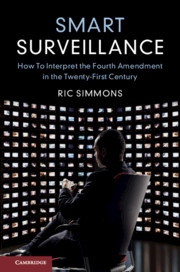Book contents
- Smart Surveillance
- Smart Surveillance
- Copyright page
- Contents
- Acknowledgments
- Introduction
- 1 The Cost–Benefit Analysis Theory
- 2 Measuring the Benefits of Surveillance
- 3 Quantifying Criminal Procedure
- 4 Reactive Surveillance
- 5 Binary Searches and the Potential for 100 Percent Enforcement
- 6 Public Surveillance, Big Data, and Mosaic Searches
- 7 The Third-Party Doctrine Dilemma and the Outsourcing of Our Fourth Amendment Rights
- 8 Hyper-Intrusive Searches
- Conclusion
- Notes
- Index
8 - Hyper-Intrusive Searches
Published online by Cambridge University Press: 02 August 2019
- Smart Surveillance
- Smart Surveillance
- Copyright page
- Contents
- Acknowledgments
- Introduction
- 1 The Cost–Benefit Analysis Theory
- 2 Measuring the Benefits of Surveillance
- 3 Quantifying Criminal Procedure
- 4 Reactive Surveillance
- 5 Binary Searches and the Potential for 100 Percent Enforcement
- 6 Public Surveillance, Big Data, and Mosaic Searches
- 7 The Third-Party Doctrine Dilemma and the Outsourcing of Our Fourth Amendment Rights
- 8 Hyper-Intrusive Searches
- Conclusion
- Notes
- Index
Summary
Chapter 8 discusses the final category of technology enhanced surveillance: hyper-intrusive searches. These searches occur when law enforcement agents use surveillance technology to see and hear private, intimate information that would otherwise be undetectable. This category includes video monitoring of private places and real-time interception of oral or digital communication. This type of surveillance unquestionably needs greater regulation; the question is what form that regulation will take. This chapter notes that courts have a variety of different tools at their disposal that can make hyper-intrusive searches more productive, and provides guidance to courts as to which tools to use for each type of hyper-intrusive search.
- Type
- Chapter
- Information
- Smart SurveillanceHow to Interpret the Fourth Amendment in the Twenty-First Century, pp. 162 - 182Publisher: Cambridge University PressPrint publication year: 2019

